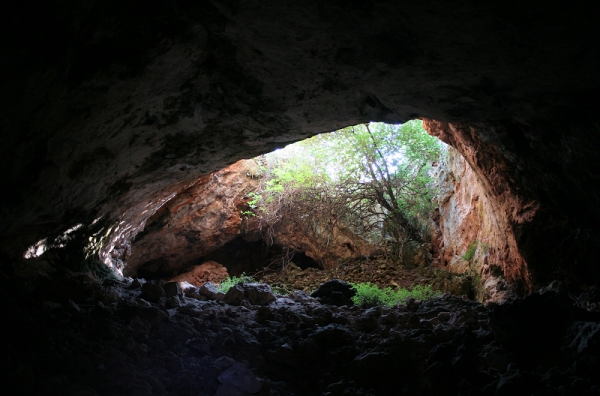Many bone remains deposited in prehistoric caves feature cuts and marks, with the scientific communityat timesattributing to their usage for human consumption. A study presented by University of Cordoba researcher Rafael Martínez Sánchez, and led by Zita Laffranchi and Marco Milella at the University of Bern (Switzerland), together with other researchers from different research centers, has just been published in the journal PLoS one. The work advances our knowledge of the funerary rites that took place as of the Neolithic by documenting how prehistoric societies modified human bones to make use of them.
To this end, more than 400 remains were analyzed. Corresponding to both adults and preadults, they were found in the Cueva de los Mármoles (cave) in Priego de Córdoba, and are preserved in the town's Archaeological Museum. Thanks to high-resolution molds that were studied with an electron microscope, the research team observed that many of the marks on some bones are compatible with a cleaning process carriedout in order to use the bone remains as tools and not (at least, in principle) for consumption.
As Martínez Sánchez explains, establishing that the marks of the bones correspond to one use (tools) or another (food) is difficult, especially because these remains were deposited on the surface of the cave, rather than being buried, such that they may have undergone other types of taphonomic modifications (by animals, trampling...) over the years. The study, however, does not see the marks of the bones as suggesting that they were used to obtain soft parts from them, for consumption.Rather, they are seen as evidencing a more careful cleaning process consistent withtheir instrumental use.Found were a fibula with a pointed end, a modified tibia, and a skull.
In addition, carbon-14 dating of twelve remains has indicated three periods of funerary use in the cave: in 3800 BC, in 2500 BC. C. and around 1,300 or 1,400 BC. The first of these periods, which corresponds to the Neolithic, coincides with a spread in the use of dolmens designed for collective burials. Therefore, it was a time characterized by a great concernwith ancestors. This overlap between the first period of burials in the cave and the beginning of Megalithism, together with the fact that the marks on the bones do not seem compatible with consumption, reinforces the research group's idea that the human remains were fashionedto be used as instruments at a given time. As Martínez Sánchez argues, "it seems that there was the idea of grouping the dead in the same place, cleaning the remains, and using the bones as instruments, perhaps related to some type of ritual performed inside the cavity."
With this study the team has managed to substantiate a treatment of skeletal remains most likely not linked to consumption, but rather to more complex factors. Thus, it seems that the bones were used for ritual and cultural aspects after their depositing. Moreover, these ways of thinking apparently spanned a great period of time, from the end of the Neolithic to the Bronze Age, a time "in which we did not expect to find that bodies were still deposited in this cavity," says Martínez Sánchez.
Reference:
Laffranchi Z, Milella M, Vera Rodríguez JC, Martínez Fernández MJ, Bretones García MD, Jiménez Brobeil SA, et al. (2023) As above, so below: Deposition, modification, and reutilization of human remains at Marmoles cave (Cueva de losMarmoles: Southern Spain, 4000–1000 cal. BCE). PLoS ONE 18(9): e0291152. https://doi.org/10.1371/journal.pone.029115.


